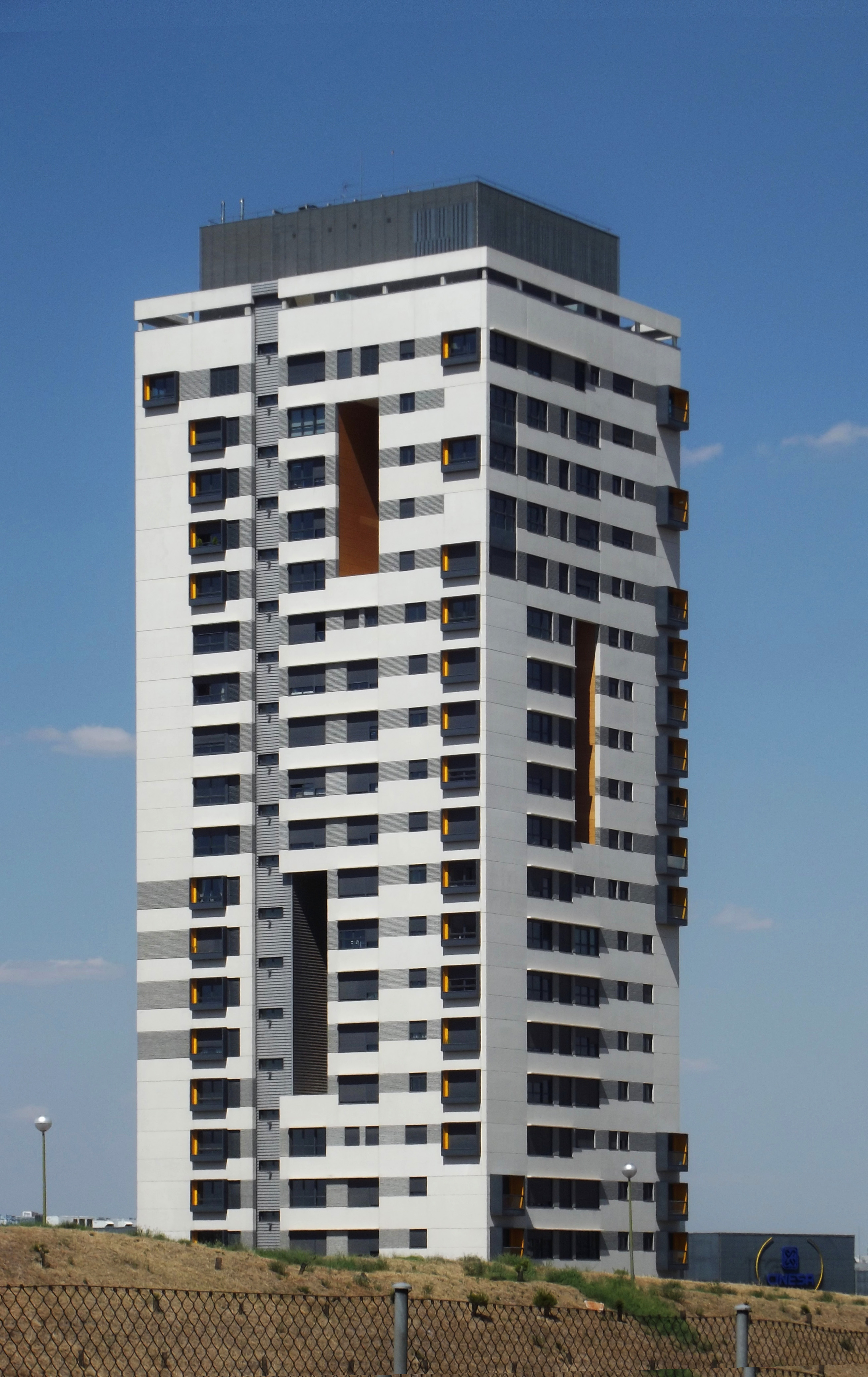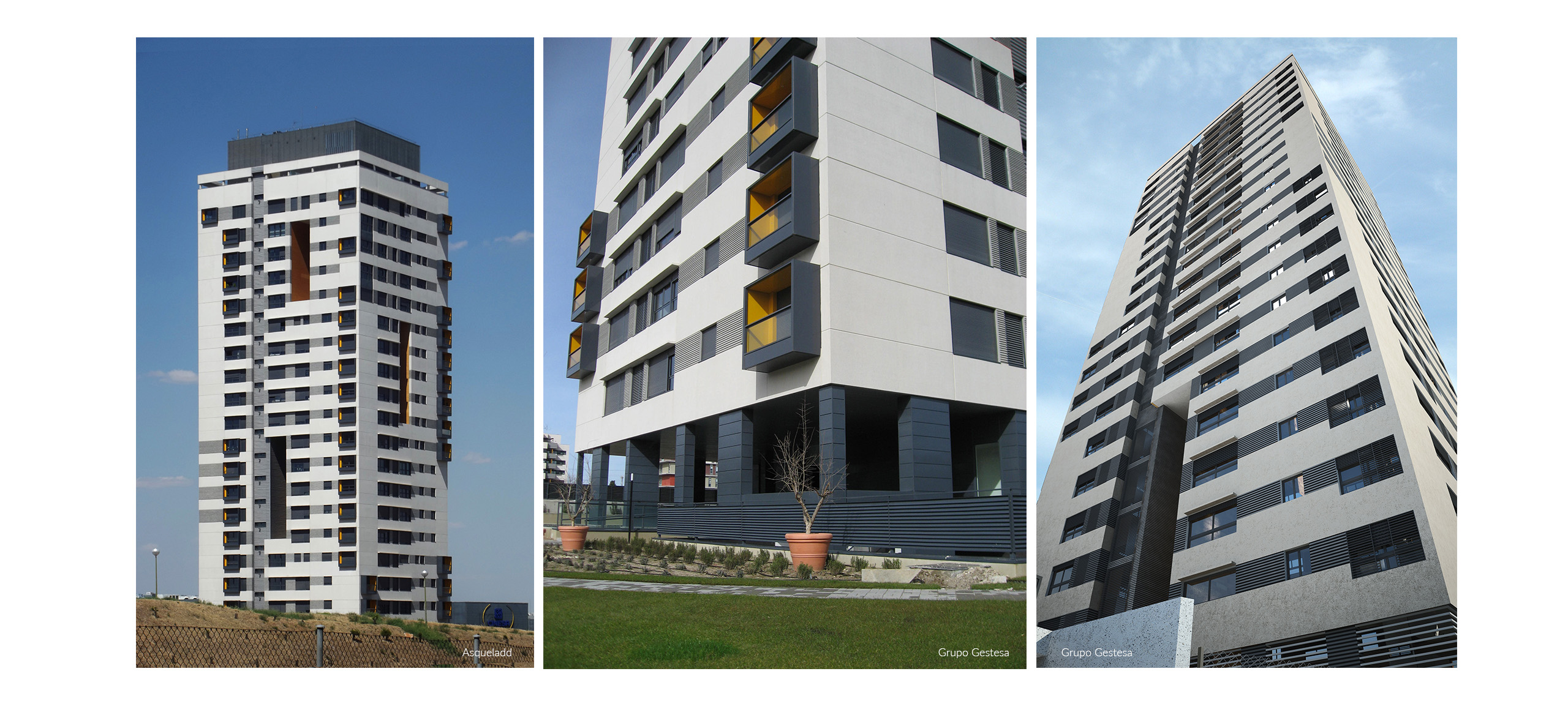
| The Gestesa Chamartín Tower | |
| Madrid, Spain | |
| Structural typology | Tall Buildings |
| Date | Januar, 2009 |
| Umfang | Detailed design and construction support |
| Architect | Bunch Arquitectura y Proyectos SLP |
| Owner | Grupo Gestesa y Caixa Catalunya |
The Gestesa Chamartín Tower is a high-rise structure which is one of a group of 4 residential tower blocks situated in the Isla Chamartin development, which itself is strategically located between the junction of the A1 and M11 motorways.
The building has 23 storeys above grade, ground floor and three basement storeys with a constructed surface area totaling 26,555m2. The floors above grade each have a surface area of 665m2 and the basement floors 3,095m2.
The excavations have been fulfilled employing piled walling embedded in competent soil. The building has two distinguishable foundation types: in the areas external to the building, where the loads are low, isolated footings shall be employed whilst in the area of the building itself, where the loads are necessarily high, floating foundations have been projected employing a 2.50m thick reinforced slab.
The horizontal forces due to wind action are counteracted by a 0.30m thick reinforced concrete central core which offers considerable stiffness to the structure. The core has integrated perfectly with the
architectural solution as it houses the lifts and installations in its interior.
Relatively small reinforced concrete columns have been placed on the external perimeter as they are only subject to gravitational loads.
The building has 23 storeys above grade, ground floor and three basement storeys with a constructed surface area totaling 26,555m2. The floors above grade each have a surface area of 665m2 and the basement floors 3,095m2.
The excavations have been fulfilled employing piled walling embedded in competent soil. The building has two distinguishable foundation types: in the areas external to the building, where the loads are low, isolated footings shall be employed whilst in the area of the building itself, where the loads are necessarily high, floating foundations have been projected employing a 2.50m thick reinforced slab.
The horizontal forces due to wind action are counteracted by a 0.30m thick reinforced concrete central core which offers considerable stiffness to the structure. The core has integrated perfectly with the
architectural solution as it houses the lifts and installations in its interior.
Relatively small reinforced concrete columns have been placed on the external perimeter as they are only subject to gravitational loads.






